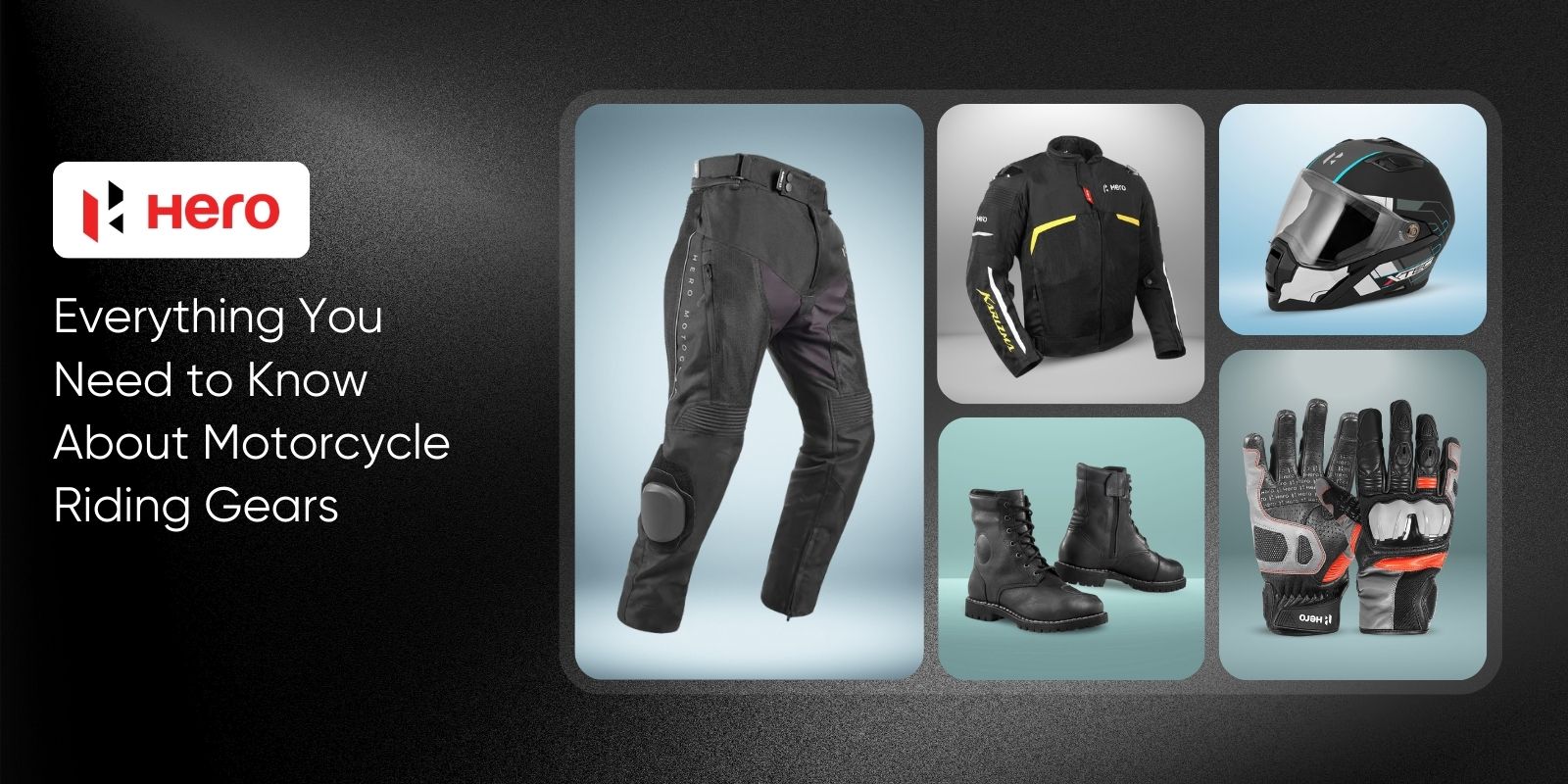Everything you need to know about Motorcycle Riding Gears
Touring Essentials

Table of Contents
Everything you need to know about Motorcycle Riding Gears
Riding a motorcycle is all about the thrill of the open road, the rush of speed, and the freedom to explore. But every seasoned rider knows that gear is essential, not just for protection but for the overall riding experience. From helmets to gloves, the right gear can make all the difference in how you feel and how safe you are.
To help you know better, we are here to take you through the essentials of motorcycle riding gear – what should you wear while riding a motorcycle, why it matters, and how to choose the best options for your next adventure.
1. Helmets: Your First Line of Defense
Your helmet is arguably the most important piece of riding gear, as it protects your head from serious injury in the event of a fall. Here’s what to consider:
- Types of Helmets: Full-face, open-face, half-helmets, and modular helmets are some of the most popular motorcycle safety gear we offer. Full-face helmets provide the most protection, covering your entire head, jaw, and face. Modular helmets can switch between full and open-face, making them versatile for city and highway riding.
- Safety Standards: Look for helmets that meet or exceed safety certifications like DOT, ECE, or Snell. These certifications ensure the helmet meets specific safety standards and can provide effective protection.
- Fit and Comfort: A helmet should fit snugly without being too tight. Make sure it doesn’t move when you shake your head, as a loose helmet can compromise safety. Many helmets come with padding and adjustable straps, which help you customise your motorcycle wear.
- Ventilation and Noise Control: Helmets with good ventilation will keep you cool on hot days, while noise control reduces the hum of wind, making long rides more comfortable.
(Source)
2. Jackets: Style Meets Protection
Motorcycle jackets aren’t just about looking cool; they provide essential protection for your upper body. Here’s what to look for in a good jacket:
- Materials: Jackets are typically made of leather, textile, or a combination of both. Leather jackets are stylish, durable, and provide excellent abrasion resistance, while textile jackets are usually lighter and come with better waterproofing options.
- Armour and Padding: Many jackets come with built-in armour at the elbows, shoulders, and back. CE-rated armour, which meets European safety standards, is often preferred for added protection.
- Seasonal Comfort: For hot climates, look for motorcycle riding clothes like jackets with good ventilation and mesh panels to keep you cool. In colder weather, consider jackets with thermal liners or those that are waterproof.
- Visibility: Reflective strips or high-visibility colours can improve your visibility to other drivers, especially when riding at night or in low-light conditions.
3. Gloves: Control and Protection for Your Hands
Your hands are vulnerable when riding, making gloves a must-have for any biker. The right gloves offer a balance of protection, comfort, and grip while also serving as the right cold-weather motorcycle gear:
- Materials and Types: Gloves come in leather, textile, and mixed materials. Leather is great for durability and abrasion resistance, while textiles are often more breathable and flexible.
- Types of Gloves: Short-cuff gloves are often lighter and more comfortable for city rides, while gauntlet gloves provide extra wrist protection for long rides.
- Protection Features: Look for gloves with knuckle protection and reinforced palms. Good gloves should also have secure wrist closures to prevent them from slipping off in case of an accident.
- Weather Resistance: Waterproof or insulated gloves are ideal for cold and wet conditions, while ventilated gloves are best for hot weather.
(Source)
4. Pants: Lower Body Protection for Every Ride
While many riders skip specialised pants, they’re crucial for protecting your lower body. Regular jeans won’t protect you from abrasion, so here’s what you need to know:
- Material Options: Like jackets, riding pants come in leather and textile options. Kevlar-lined jeans are also popular as they combine the look of jeans with abrasion resistance.
- Built-in Armour: Many men's and women's motorcycle riding gear pants come with CE-rated armour at the knees and hips, adding extra protection where it’s needed most.
- Comfort and Fit: The right pants should offer flexibility and comfort, especially around the knees and hips, which bend as you ride. Make sure they’re neither too tight nor too loose, as either extreme can reduce protection.
- Weather Considerations: Choose lighter, breathable fabrics for hot climates and thicker, insulated materials for colder conditions.
5. Boots: Sturdy Support for Your Feet
Good riding boots protect your feet, ankles, and lower legs from impact and abrasion. They also offer much-needed support for controlling the bike:
- Ankle Protection: Look for boots that cover and support your ankle. Reinforced areas around the ankle help protect against impact and torsion.
- Material: Leather and synthetic materials are both durable choices. Waterproof or water-resistant boots are ideal for riders in wet conditions.
- Non-Slip Soles: Motorcycle rain gear for men, such as boots, will have non-slip soles for a secure grip on your bike’s pegs and on the ground when you’re stationary.
- Comfort and Fit: Boots should fit comfortably but snugly. Break in your boots before long rides to avoid discomfort.
Motorcycle riding is all about freedom, but riding without the right gear isn’t worth the risk. Whether you're a daily commuter, a weekend rider, or a long-distance adventurer, good riding gear can make all the difference in how much you enjoy and stay safe on the road. We provide high-quality riding gear to help you protect yourself from the elements and potential accidents, all while adding to the style and thrill of riding.
So shop at our Hero eShop portal, stay safe, and enjoy every kilometre of your journey.

